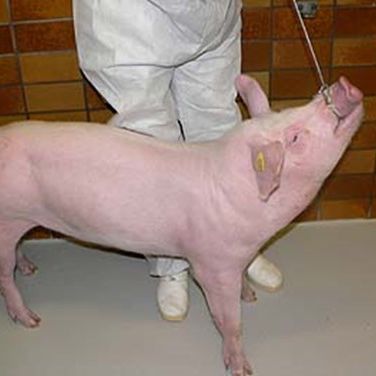

Conclusion: This research extends current sequential OSCE literature using a novel and robust approach to identify the 'ideal' in terms of number of screening stations and pass mark. We proceed to obtain the decay correlation function I( the results are different and lead to a new and very intuitive sum rule for transverse polarization. Eight stations as a screening test appeared to be a reasonable compromise in terms of high sensitivity (88-89) and specificity (83-86). SE and SP are incomplete because for clinical diagnosis, the question of concern should actually be: 'what is the chance that the clinical condition will be present or absent in the context of a positive. We first review the standard model, the symmetries P, C, T, and CP, and the history of parity/signature tests. SNOUT is the acronym for 'Sensitive test when Negative rules OUT the disease', SPIN for, 'Specific test when Positive rules IN the disease'. S2SC functions should be useful for testing for possible non-CKM-type violation in top quark and in boson decay processes. In statistics, sequential analysis or sequential hypothesis testing is statistical analysis where the sample size is not fixed in advance. Ideal statistical errors for decay are calculated for possible application at the, at a factory, or at the -charm threshold.

Since this adds on spin-correlation information from the next stage of decays in the decay sequence, we call such an energy-angular distribution a stage-two spin-correlation (S2SC) function. SNOUT is the acronym for ‘Sensitive test when Negative rules OUT the disease’, SPIN for, ‘Specific test when Positive rules IN the disease’.
SEQUENTIAL TESTING SNOUT AND SPIN FULL
The full angular distribution for the above process, including the ] momentum direction versus that of the ] momentum, can be used to test more » for such a non-CKM-type leptonic violation in decay.
SEQUENTIAL TESTING SNOUT AND SPIN TRIAL
Sequential sampling allows the experimenter to stop the trial early if the treatment appears to. In this post, I will describe a simple procedure for analyzing data in a continuous fashion via sequential sampling. By invariance the moduli ratio of, and phase difference between, the two helicity amplitudes for ]]] decay should equal those for ]] decay. Stopping an A/B test early because the results are statistically significant is usually a bad idea. There are two tests for leptonic violation in decay by inclusion of polarimetry observables in the energy correlation function for or ](])(]).


 0 kommentar(er)
0 kommentar(er)
